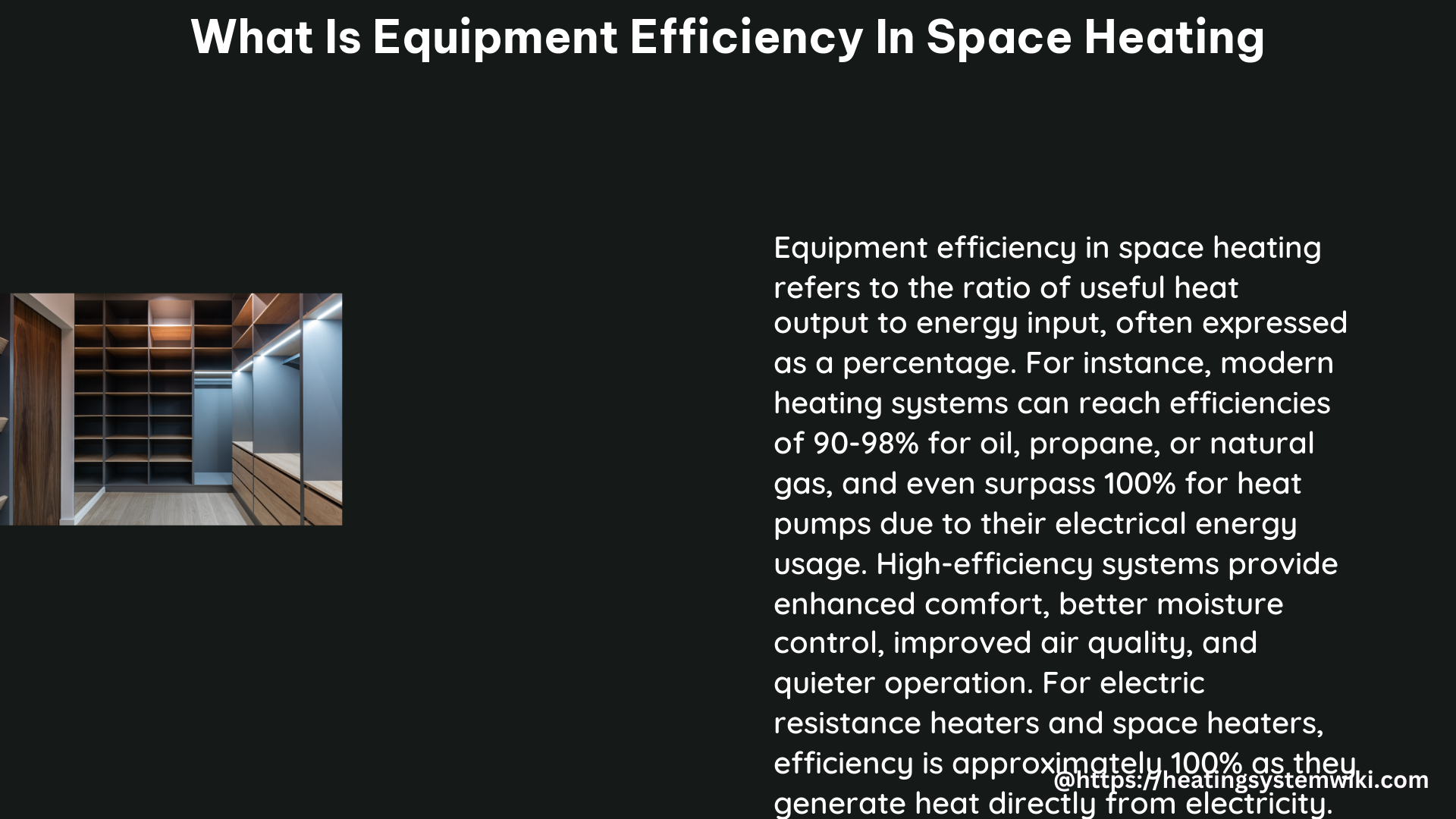Equipment efficiency in space heating refers to the ability of heating equipment to convert energy into heat while minimizing energy waste. This is achieved by designing and manufacturing heating equipment that uses the least amount of energy necessary to maintain a comfortable indoor temperature. Energy-efficient heating equipment can help reduce energy bills, lower greenhouse gas emissions, and improve indoor air quality.
Technical Specifications of Equipment Efficiency in Space Heating
The technical specifications of equipment efficiency in space heating vary depending on the type of heating equipment. Here are the key metrics used to measure the efficiency of different types of heating equipment:
Heat Pumps
The efficiency of heat pumps is measured by their Heating Seasonal Performance Factor (HSPF), which measures the total heating output of a heat pump during the normal heating season, as compared to the total electricity consumed during the same period. The higher the HSPF, the more efficient the heat pump. The minimum HSPF for a heat pump to be considered energy-efficient is 8.2, with the most efficient models having an HSPF of 10 or higher.
Heat Pump Water Heaters
Heat pump water heaters are measured by their Energy Factor (EF), which is a measure of the overall energy efficiency of the water heater. The higher the EF, the more efficient the water heater. The minimum EF for a heat pump water heater to be considered energy-efficient is 2.0, with the most efficient models having an EF of 3.0 or higher.
Energy-Efficient Windows
Energy-efficient windows are measured by their U-factor, which measures the rate of heat transfer through the window. The lower the U-factor, the more efficient the window. The recommended U-factor for energy-efficient windows is 0.30 or lower, with the most efficient windows having a U-factor of 0.20 or lower.
Insulation
Insulation is measured by its R-value, which measures the resistance to heat flow. The higher the R-value, the more efficient the insulation. The recommended R-value for attic insulation is R-49 or higher, while the recommended R-value for wall insulation is R-20 or higher.
Smart Thermostats
Smart thermostats are measured by their ability to reduce energy use and lower energy bills. The most efficient smart thermostats can reduce energy use by up to 30% compared to a standard thermostat.
Computer Power Management Systems
Computer power management systems are measured by their ability to reduce energy use and lower energy bills. The most efficient systems can reduce energy use by up to 50% when computers are not in use.
DIY Equipment Efficiency in Space Heating

There are several DIY steps that homeowners can take to improve the efficiency of their heating equipment:
- Install a Programmable Thermostat: Programmable thermostats can automatically adjust the temperature when you are away from home or sleeping, reducing energy use and lowering energy bills.
- Seal Air Leaks: Sealing air leaks around windows, doors, and walls can prevent drafts and reduce heat loss, improving energy efficiency.
- Add Insulation: Adding insulation to attics, walls, and floors can significantly reduce heat loss, improving energy efficiency.
- Install Energy-Efficient Windows: Energy-efficient windows with a low U-factor can reduce heat loss and improve indoor comfort.
- Replace Older Heating Systems: Upgrading to a heat pump or heat pump water heater can significantly improve energy efficiency compared to older, less efficient heating systems.
- Install a Smart Thermostat: Smart thermostats can optimize heating and cooling schedules to reduce energy use and lower energy bills.
- Implement Computer Power Management: Installing a computer power management system can reduce energy use when computers are not in use.
By implementing these DIY measures, homeowners can significantly improve the efficiency of their heating equipment and reduce their energy costs.
References
- Energy Efficiency | ENERGY STAR. (n.d.). Retrieved May 17, 2024, from https://www.energystar.gov/about/how-energy-star-protects-environment/energy-efficiency
- Energy Efficiency Standards for Appliances, Lighting and Equipment. (2017). Retrieved May 17, 2024, from https://www.eesi.org/papers/view/fact-sheet-energy-efficiency-standards-for-appliances-lighting-and-equipment
- 2023 Energy Efficiency Standards | AHRI. (n.d.). Retrieved May 17, 2024, from https://www.ahrinet.org/2023-energy-efficiency-standards
